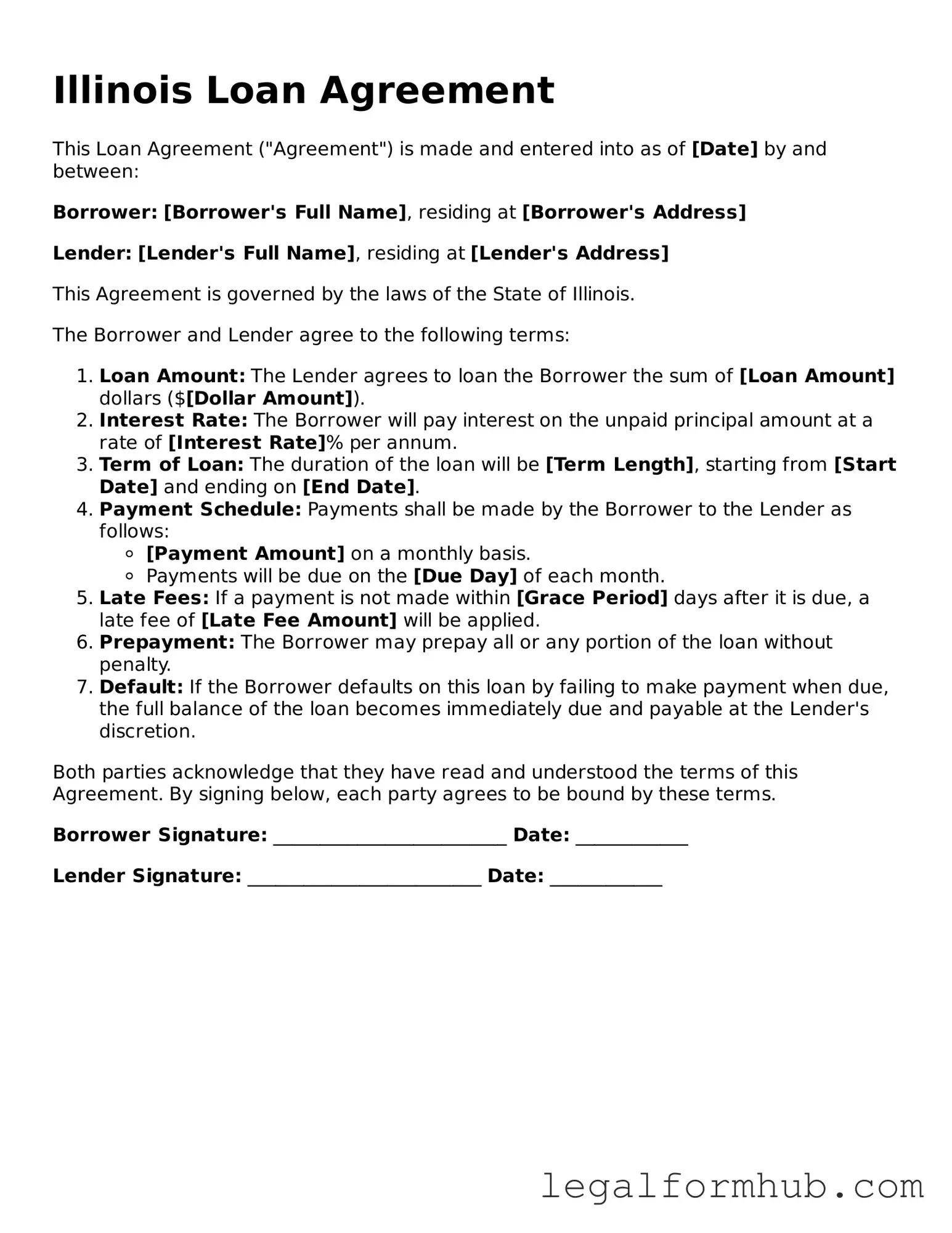The Illinois Loan Agreement form shares similarities with a Promissory Note. Both documents outline the terms of a loan, including the principal amount, interest rate, and repayment schedule. A Promissory Note serves as a written promise from the borrower to repay the loan, often including details about default consequences. While the Loan Agreement may cover broader terms, the Promissory Note is typically more concise and focused solely on the borrower's commitment to repay the borrowed amount.
Another document comparable to the Illinois Loan Agreement is the Security Agreement. This document is used when a loan is secured by collateral. Similar to the Loan Agreement, it specifies the terms of the loan but also includes details about the collateral being pledged. In both cases, the lender has rights to the collateral in the event of a default, providing a level of security for the loan.
The Illinois Loan Agreement also resembles a Credit Agreement. This document is often used in commercial lending and outlines the terms under which credit is extended. Like the Loan Agreement, it details the amount, interest rates, and repayment terms. However, a Credit Agreement may involve multiple parties and can include additional terms related to the borrower's financial covenants and obligations.
In the realm of financial agreements, careful documentation is essential, and understanding these types of contracts can simplify the process. For instance, if you're in need of a specific document, you might find yourself looking to Fill PDF Forms for assistance, ensuring that all necessary details are accurately conveyed.
A Lease Agreement is another document that shares commonalities with the Illinois Loan Agreement. While a Lease Agreement pertains to the rental of property, it similarly outlines terms regarding payment schedules and obligations. Both agreements require the parties to adhere to specific terms, and failure to comply can result in penalties or legal action.
The Illinois Loan Agreement is also similar to a Forbearance Agreement. This document is used when a borrower is struggling to meet payment obligations. It outlines a temporary modification of the loan terms, similar to how the Loan Agreement establishes the original terms. Both documents require the borrower to adhere to specific conditions to avoid further legal repercussions.
A Guaranty Agreement is another document that parallels the Illinois Loan Agreement. This agreement involves a third party who agrees to take responsibility for the loan if the borrower defaults. Like the Loan Agreement, it specifies the terms of the loan and the obligations of all parties involved, ensuring that the lender has recourse if the borrower fails to meet their obligations.
The Illinois Loan Agreement is also akin to a Loan Modification Agreement. This document is used to change the terms of an existing loan, often due to the borrower's financial difficulties. Both agreements require clear terms regarding payment schedules and obligations, but the Loan Modification Agreement specifically addresses changes to the original Loan Agreement.
Lastly, a Mortgage Agreement bears similarities to the Illinois Loan Agreement. This document is specifically used when real estate is involved as collateral for the loan. Like the Loan Agreement, it outlines the terms of the loan, including repayment schedules and interest rates. However, the Mortgage Agreement includes specific provisions regarding the property itself and the lender's rights in case of default.
